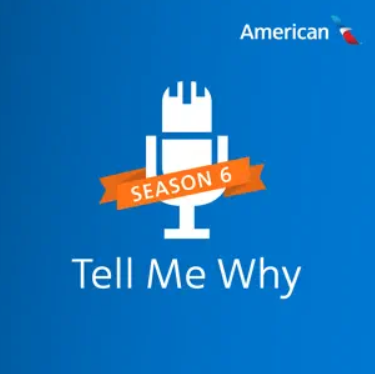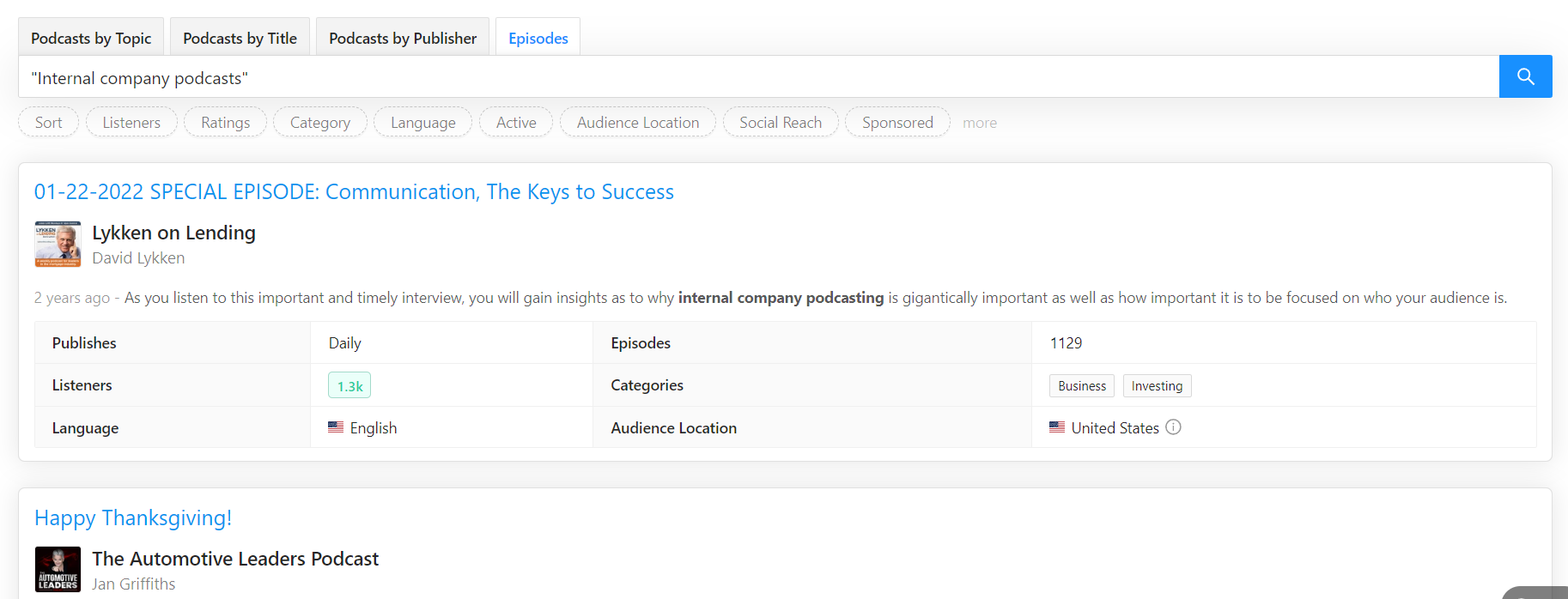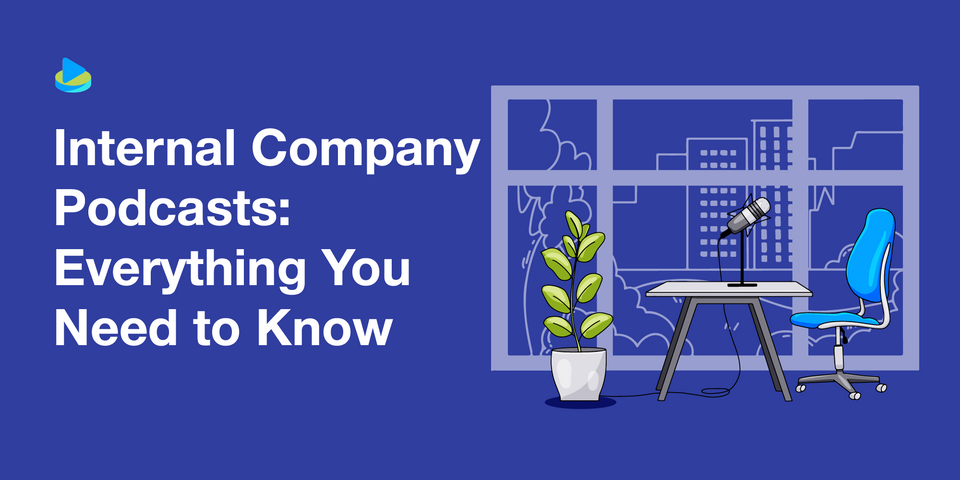Some companies love their internal podcasts.
They believe that audio content can effectively communicate company values, culture and messages, showcase different departments, inform on the latest industry trends and help to keep their massive workforce on the same page.
However, other businesses don't think they need to have their own podcast.
They could be right. Running a podcast takes time and effort and buy-in from the management team and potential listeners. If the passion isn't there it could be hard to get a podcast off the ground.
Nevertheless, podcasting is so popular in today's world, that many firms are exploring the idea, of starting a podcast, especially if some of their workforce are remote working or the company has offices in many towns or countries.
If you're in that camp you're in the right place. Let's dig into the nuts and bolts of starting an internal company podcast.
Table of Contents
What is an internal podcast?
Internal company podcasts are recorded for a company's staff and management. You might also hear them called internal corporate podcasts.
They often come from the company's internal communications team and are made to reflect the company culture and encourage employee engagement and education around the company's values, business strategies and with other divisions in the company.
Many internal podcasts are kept as private podcasts and company staff can only access them through a password protected RSS feed, or other internal channels. These podcasts often deal with sensitive information which the company wants to keep in-house.
However, some companies make their podcasts available in podcast directories so anyone can listen. Done well, that can be an excellent PR strategy because it helps customers and other interested people get to know the business, its staff and their company culture.
What type of companies have internal podcasts?
There are no hard and fast rules about which businesses could or should make internal podcasts.
That being said, large companies are more likely to use an internal podcast than smaller ones because of the numbers of people they need to reach.
Industries currently using or considering internal podcasts include:
- Large Corporations
- Tech Companies
- Media and Entertainment Companies
- Consulting and Professional Services Firms
- Financial Institutions
- Healthcare Organizations
- Education and Nonprofit Sectors
This article reveals that of the 11,000 respondents to a survey Forbes conducted back in 2021, 50% planned to introduce corporate podcasts in the following year and 100% agreed that they thought there'd be more podcasts in the years to come.
Example - Tata Steel and "SteelCast"

Tata Steel is a multinational steel production company based in India and operating in 26 countries, including the UK.
Tim Rutter and Gareth Brookes launched SteelCast as a UK internal corporate podcast in 2020 to connect people working remotely and on the many sites throughout the country. Over the seasons they've highlighted individuals (for example they ran a series on Women in Steel), investigated the history of various UK worksites, and recently produced a series examining the role that steel can play in decarbonization and green technology.
Although initially conceived as a private podcast, anyone can now listen to SteelCast on various podcast directories and on YouTube.
Corporate podcast ideas
Companies use internal podcasting for many different reasons.
#1 To keep everyone on the same page
You keep people in the loop when you:
- Make announcements
- Notify employees about deadlines
- Promote upcoming events
- Share private information, such as future plans for the company.
- Provide updates on company strategies and goals
- Updating employees on the development of a project.
#2 As a learning tool for specific segments in the company
Develop and collage evergreen content as education tools for:
- Onboarding new employees
- Distributing onboarding information
- Teaching valuable skills
- Training and development for particular team members (e.g., the marketing team, the comms team, admin...) or segments (e.g. apprentices, leadership trainees, sales staff...)
- Repurpose webinars and other trainings by recording them and saving the evergreen sections as audio or video podcasts.
#3 To build culture and engagement
Keep employees connected and motivated by:
- Sharing stories
- Highlighting talent
- Interview team members or stakeholders
- Sharing expertise in a specific subject through thought leadership.
- Keeping connected, especially in a large company with many national or global offices or worksites
- Helping to embed company values by highlighting stories of the values in action (Listen to the Candid Comms podcast "How to communicate your company's values S1, Episode 14 for interesting insights on embedding company values.)
One podcast may not do all these jobs well. For example, you might do an on-boarding podcast or video series and make that separate to your company culture-building podcast.
Or, you might have an "announcements section" or "five minutes with the CEO" segment built into each podcast episode.
Should your firm start an internal company podcast?
Not every corporation needs to create an internal podcast. So, if you're wondering about starting one, try exploring these questions first. Answer them yourself and get other people's perspectives too.
And after each question, add another one: Would a high quality podcast improve or enhance this situation?
- How effective is our current internal communication strategy?
- Are our employees engaged and active in internal communications?
- Are there challenges in sharing knowledge and information across different teams or departments?
- What is the current state of our company culture? How can we strengthen it?
- Do our staff get enough training and development opportunities?
- How visible are our company leaders? What impact does their visibility have on morale?
- Do we need to improve transparency and trust within the organization?
- How do we improve staff enthusiasm and involvement?
- Do we have flexible learning solutions that fit different people's needs?
- How can team collaboration be improved across sites and remote work environments?
Are you the right person to host or produce the podcast?
You can't wait to get started. New ideas for episodes and interviews keep bubbling up. You can see how you'd rearrange your timetable to fit and you already know how you'll recruit a team to help.
Maybe you don't know how to edit or record but you're willing to learn. You're good at personal connection, can hold people's attention when you speak and you love learning, especially about the industry.
Finally, all the questions and prep have only fired your passion. You know it'll be hard work and you're prepared to give it a go.
Sounds like you'd be great at starting your company podcast.
If this isn't you at all (not even a teeny bit) then running a podcast would be a chore and an uphill battle. You should probably delegate the task.
How to start internal podcasting
Maybe the idea to start an internal company podcast has been brewing for months. Or, perhaps reading this has given you a flash of inspiration. Either way, podcast episodes don't just happen.
It takes lots of careful planning and preparation to make a successful podcast. Here's how you start.
Plan your podcast
You have a lot to consider when planning a podcast.
What's your podcast concept?
Many internal podcasts are about keeping employees connected, especially if some (or all) are remote workers. Will you be highlighting personal stories? Finding success stories? Showing lived company values through storytelling? Connecting multiple offices? Creating learning materials?
Discuss the concept with as many people within the organisation as you can to determine which concept has the best chance of success.
Example - American Airlines and "Tell Me Why"

The American Airlines company podcast is called Tell Me Why. Published on Apple podcasts, it "talks about the "why" behind the decisions we make or the approach we take at the company." The concept helps them reach company employees and members of the public to explain why things work they way they do.
Who is your target audience?
- Will this be a private podcast or will it be available to others? Make this decision early on because it affects everything else.
- When do you envisage people listening? Some people will happily listen on their daily commute, or while they're at the gym. But others prefer to separate work and downtime and wouldn't listen to a work podcast when they're off duty.
- How will people listen? If this is a private podcast, how can you make it easy for people to tune in? Is there a password protected private link? How many steps does it take? If there's too much friction many of your audience will say they haven't got the time or patience to jump through login hoops.
Example:

Listen to A Promising Podcast and its Legacy of Lessons to see how getting the target audience questions (and answers) wrong can make or break an internal podcast.
What podcast format will you use?
You've got a few choices available. Here are 16 podcast formats - although some of these aren't suitable for an internal company podcast. You'll probably choose between making a solo, co-hosted or roundtable podcast. But how will you share information? Will you do interviews? Share it as a story? Go offsite? Combine formats (as the article suggests?) This decision will heavily influence your content strategy and research.
Remember why people listen to podcasts. Most people listen for entertainment and to learn something new.
Audio's big strength is the connection it brings - people are hardwired to listen to other people's voices and to enjoy conversation and stories. That's why many podcasts in these formats are so successful; they deliver on expectations but with a unique twist to keep things interesting.
Example - East Riding of Yorkshire Council and "I Heard It Through The Grapevine"

The I heard it through the Grapevine podcast from Yorkshire's East Riding Council may have had employee engagement in mind but making it public brings in an interested local audience too.
Each episode has several segments but introducing a regular local competition is one of the podcast's unique twists.
The hosts invite people to email in with the answer to a simple question to go into the draw to win, e.g., two tickets to a local event. That small segment introduces an element of fun, the chance of winning (always a good hook), promotes a local event AND gives the podcast production team an indication of who's listening and where they're from.
Plan the content
Many experts say you should be bursting with ideas before you start recording your first episode. If you can't easily rustle up twenty or more episode ideas, go back to the drawing board.
Some interview ideas:
- Talk to management team members about the company's direction
- Company history - ask longtime employees what they remember
- What's happening at different departments or worksites?
- Get to know your staff: interview people about their outside interests or passions
- Talk to people who embody the company culture or values to explore what they do and why
Example - Spotify and "Life at Spotify, The Podcast

Spotify highlights company culture by sharing its internal company podcast episodes in Life at Spotify. As they put it: "Our mission is to showcase Spotifers and the unique learning experiences that drive our culture and help us all grow."
Get the right equipment
It's technically possible to record your podcast on a mobile or using your laptop's inbuilt mic. But, there's a reason why most podcasters don't do that - sound quality!
Podcasts are audio-first platforms. Videos can often get away with lesser sound quality because viewers have the visuals to occupy their attention. But in podcasting, good ( and preferably excellent) audio quality is a must.
That means you need a decent microphone. Mics come in many shapes and sizes. Some are built especially to capture voices, others are more versatile. Music Radar tested 10 different mics and offer their opinions on them here.
You'll also need a recording device, headphones and probably a pop filter, which goes between your mouth and the mic to soften harsh sounds. Spotify has this helpful article on the 'basic' and 'better' equipment you might consider.
Put a podcast team together
Podcasting takes up a fair chunk of time and effort so you'll need team members to help. Make sure they're passionate about the project and bring a range of useful skills.
Ideally you'd have a:
- Host (or hosts) with a great speaking voice who can relate to the people they're interviewing. Co-hosts need to have a good rapport and ideally complement each other's styles or personalities.
- Content creator to draft questions, find interviewees, write scripts (or at least outlines)
- Coordinator to keep everyone in contact, coordinate team members for interviews
- Liaison and marketing person to get the word out
- Podcast editor to convert the raw footage into a podcast with great production quality
- Podcast producer
Often your team members will take on more than one role. You might even have a team of just two dividing all these jobs between them. But as you can see, creating an internal podcast could be all-consuming for one person working on their own, especially if they have other responsibilities in the company too.
Set up your studio
There are many ways to get a studio together. If you're from a communications or entertainment company like Spotify or Netflix you've probably got a dedicated space already set up. The team at "I heard it through the grapevine" works with a local radio station to record and edit their podcast episodes.
You might be able to soundproof an empty office and set up equipment there. Or you may even record online or at home. Aim to create a good enough environment to make your podcast sound professional.
Example - Deloitte and "The Green Room"

Deloitte "The Green Room" is another corporate podcast made public. As the team puts it:
"We produce The Green Room fully in-house – the show is led by our creative content team, recorded with support from our creative studio, and inspired by the amazing work from teams across Deloitte. We even asked a colleague to compose our jingle!"
Record an episode
If you've never made a regular podcast before you'll be nervous - maybe even terrified when you make your first episode. Don't worry - it'll get easier with practice.
Recording one or more pilot episodes can also give you a proof of concept example when you're pitching your business plan to your company's budget or internal comms decision makers.
Edit the episode
Creating an internal podcast episode takes more than recording. Editing enhances audio quality by taking out background noise, removing long pauses and some filler words. You might also rearrange sections of the recording to tell a better story, add music and so on. Be wary of overediting, thought. You still need the conversation to sound natural.
Editing software comes in all shapes and sizes. Here are some options if you don't have access to an in-house company studio.
- Hire a podcast production agency like The Podcast Guys, Quill, Tandem or Lemonpie (to name a few.)
- Hire a freelance podcast editor
- Do it yourself with editing software like Audacity, Descript, Riverside, Reaper FM etc.
Check out our podcast editing articles: How much does podcast editing cost? and Top 5 Expert Editing Tips.
Publish and share the episode
Finally, it's time to press publish on your episode on whatever platform you've decided to use. But you'll need to share and publicize the episode to let people know it's ready for their ears.
Send an enticing message out on all the internal communications channels your company uses. E.g., email, instant messaging channels like Teams or Slack, social media and book a spot in the company newsletters or bulletins.
Mention your podcast at in-person or online meetings and trainings. You might even pop a flyer on the staff noticeboard (if such a thing still exists.)
Use Rephonic to learn more about internal podcasts
Are you getting excited about the idea of creating an internal podcast? Are you brimming with ideas on how to enhance the one you've already got? Perhaps you're interested, but want to learn more.
Use Rephonic to find specific episodes about internal comms and internal podcasting from many different podcasts.
Here's how you do it:
- Open the Search bar and tap EPISODES
- Enter "internal company podcasts" - use quotation marks to get the most relevant results
- Explore - you'll find many thought leaders and seasoned podcasters sharing their experiences and insights.

Final thoughts
Internal company podcasts can be an effective way to get the team together. Use Rephonic to learn more about them and to reach out to those in the know.


